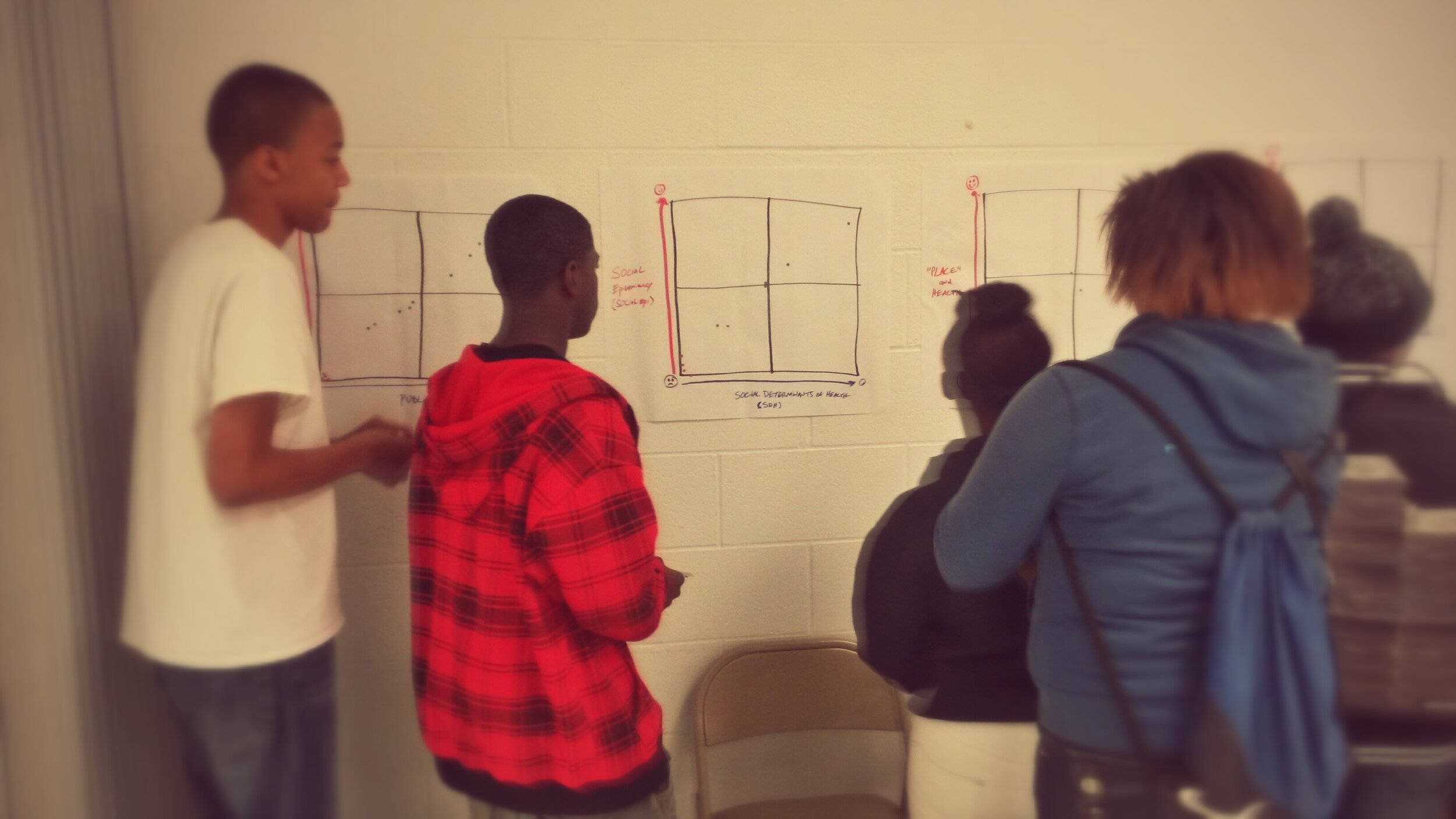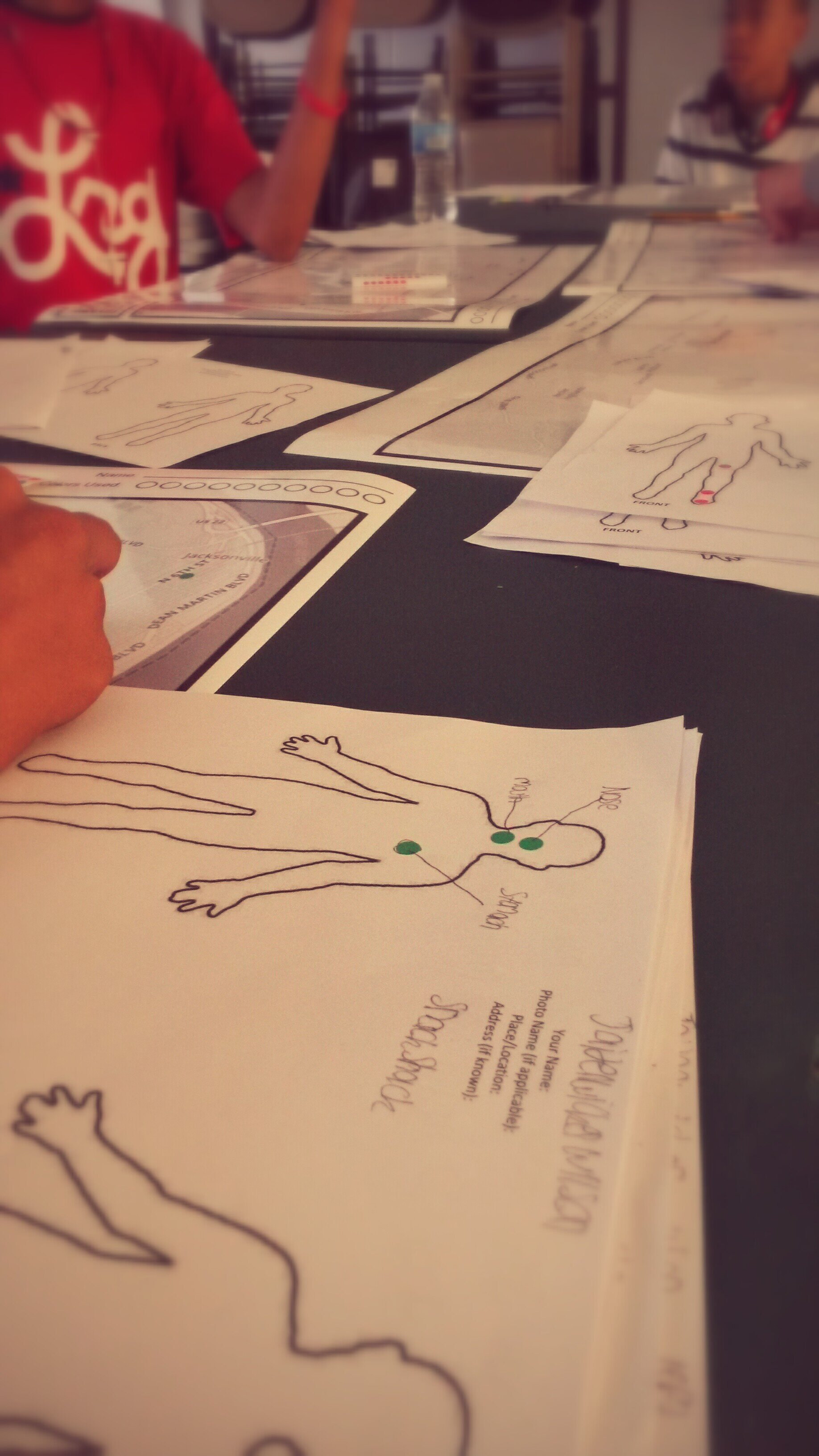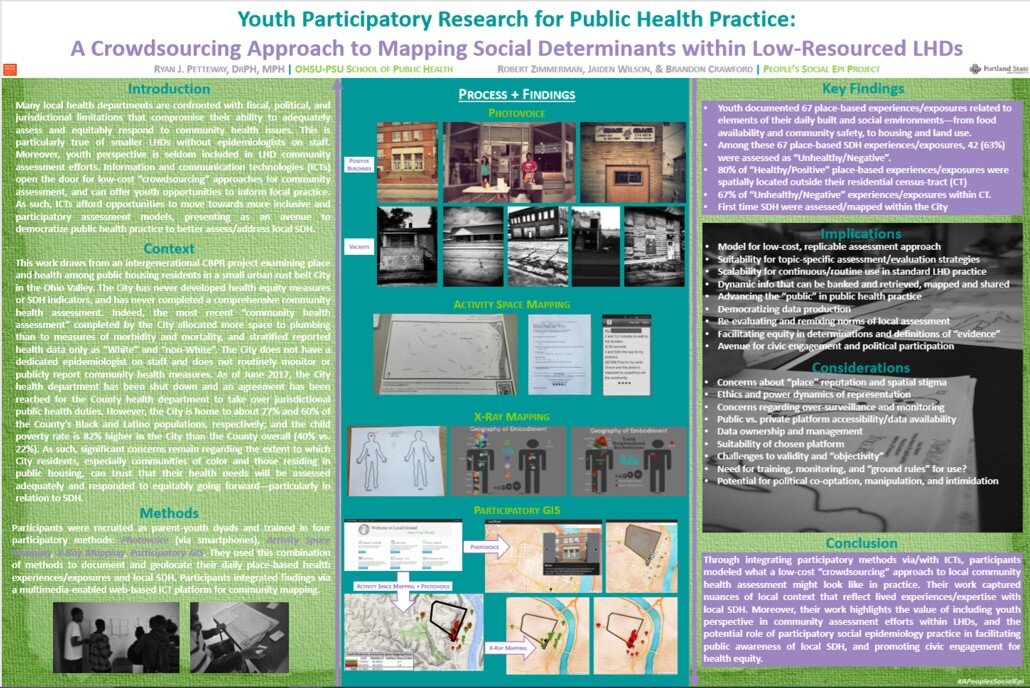The People’s Social Epi Project
Overview
In collaboration with youth and adult public housing residents, and with the support of various city officials, including the Health Commissioner, City Council Members, and the public schools STEM Director, The People’s Social Epi Project (PSEP) was a multimethod, intergenerational CBPR project that examined place and health in the context of public housing. PSEP integrated social epidemiology and CBPR at the nexus of public health and public housing, making use of ICTs to deepen resident participation and democratize research efforts, with the broad goal to further understand where and how place-based exposures that affect health and well-being are encountered, perceived, and experienced intergenerationally. Overall, the PSEP sought to:
Expand and make new contributions to research on health in public housing;
Improve conceptual and analytical understandings of “place” through identifying the spatial and social (dis) connections between the places of residents’ daily activities;
Elucidate spatial and perceptual differences between parent and youth place experiences.
This work engaged both adult and youth residents, recruited as parent-child dyads. I trained an adult resident as a research co-lead, guiding her through the CITI certification process. We trained participants in four participatory research methods, including photovoice and participatory GIS. We worked with residents as co-researchers, training them in each participatory method so that they could effectively collect, map, code, and analyze their own data—maximizing participant agency and narrative power.
PSEP was anchored in the People’s Social Epi Framework, which is rooted in ecosocial theory, Critical Theory, Feminist Theory, ICT theory, and principles, practices, and processes of CBPR and decolonizing and emancipatory methods. Generally, as described in Petteway, et. al. (2019, p.5):
“The growing prominence of community-based participatory research (CBPR) and the increasing utility and uptake of information and communication technologies (ICTs) afford the opportunity to move towards a more inclusive and participatory social epidemiology—an avenue to democratize (and “socialize”) social epidemiology research/practice. In short, what we have before us is an opportunity to remix and reboot social epidemiology with inclusion, equity, and action built into its fundamental operating code. It is a chance to reimagine “social”, and to revisit and recast Virchow (in a very paraphrased sense): what social epidemiology needs is full and unlimited democracy.”
A selection of works based on the PSEP
Petteway, RJ, Mujahid, M, Nuru-Jeter, A, and Morello-Frosch, R (2019). “Towards a People’s Social Epidemiology: Envisioning a More Inclusive & Equitable Future for Research & Practice in the 21st Century. Int. J. Environ. Res. Public Health, 16(20), 3983.
Petteway, RJ, Mujahid, M, Nuru-Jeter, A, and Morello-Frosch, R (2019). “The Body Language of Place: A New Method to for Mapping Intergenerational Geographies of Embodiment.” Social Science & Medicine, 223: 51-63.
Petteway, RJ (2019). “Intergenerational Photovoice Perspectives of Place and Health in Public Housing: Participatory Coding, Theming, and Mapping in/of the ‘Structure Struggle.’” Health & Place, 60.
Petteway, RJ (2019). “Towards a Placescape Approach: Conceptual and Methodological Considerations for Decolonizing the Production of Place-Health Narratives.” American Association of Geographers Annual Meeting, Washington, DC, April 3-7.
Petteway, RJ (2018). “Place, Health, and the Geography of Embodiment: Intergenerational Participatory Research for Representation/as Resistance in The Ville.” American Association of Geographers Annual Meeting, New Orleans, LA, April 10-14.
Petteway, RJ (2017). “Real Limits of Imaginary Lines: A Participatory Activity Space Method for Exploring Intergenerational (Dis)Connections Between ‘Place’ and Health.” 145th Meeting of the American Public Health Association, Atlanta, GA, November 4-8.
Petteway, RJ (2017). “Decolonizing Social Epi Research & Practice: People, Agency, Inclusion, & the End of N’s.” C2U Expo 2017/Community-Campus Partnerships for Health 2017, Vancouver, BC, May 1-5.
Petteway, RJ, *Zimmerman, R, *Wilson, J, and *Crawford, B (2017). “Youth Participatory Research for Public Health Practice: A Crowdsourcing Approach to Mapping Social Determinants within Low-Resourced LHDs.” NACCHO Annual 2017, Pittsburgh, PA, July 11-13. [*Denotes youth researcher co-author*]
Petteway, RJ, Parikh, T, and Van Wart, S (2016). “Social(ized) Epidemiology: Exploring the Utility of a Crowdsourcing Approach to Local Community Health Assessment via ICTs and Participatory Methods.” 144th Meeting of the American Public Health Association, Denver, CO, October 29-November 2.
Petteway, RJ (2014). “Placescapes and the Geography of Embodiment: A New Paradigm for Understanding Place and Health Across the Lifecourse.” 142nd Meeting of the American Public Health Association, New Orleans, LA, November 15-19.
““Reappraising the value of peoples’ lived and embodied knowledge of their social and environmental contexts and experiences of social and environmental inequity, and reassessing our assumptions about the ways and degrees to which people can contribute to social epidemiology research/practice, will allow for re-envisioning how social epidemiology can make more direct and tangible impacts on the social and environmental conditions that shape health. Integrating social epidemiology with core principals and processes of CBPR and further integrating the technical and procedural affordances and theoretical groundings of ICTs can facilitate the development of a social epidemiology that is no longer simply about the people, but with and by them as well. This is how we can enhance the field and ensure it remains distinct and useful for researchers/practitioners, and more importantly, for participant communities—the “n’s” whose experiences within the social production of health are the lifeblood of our field.””



